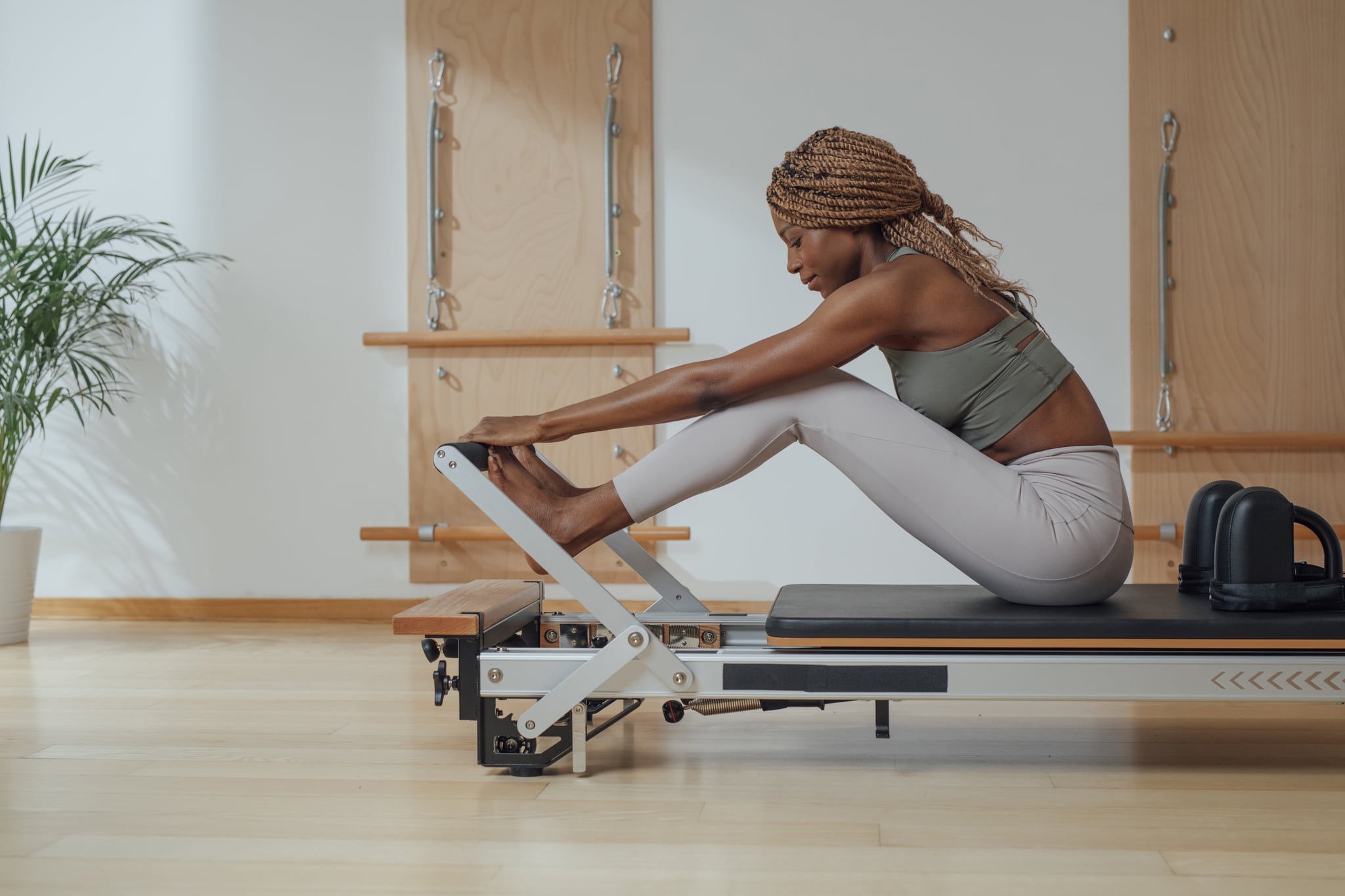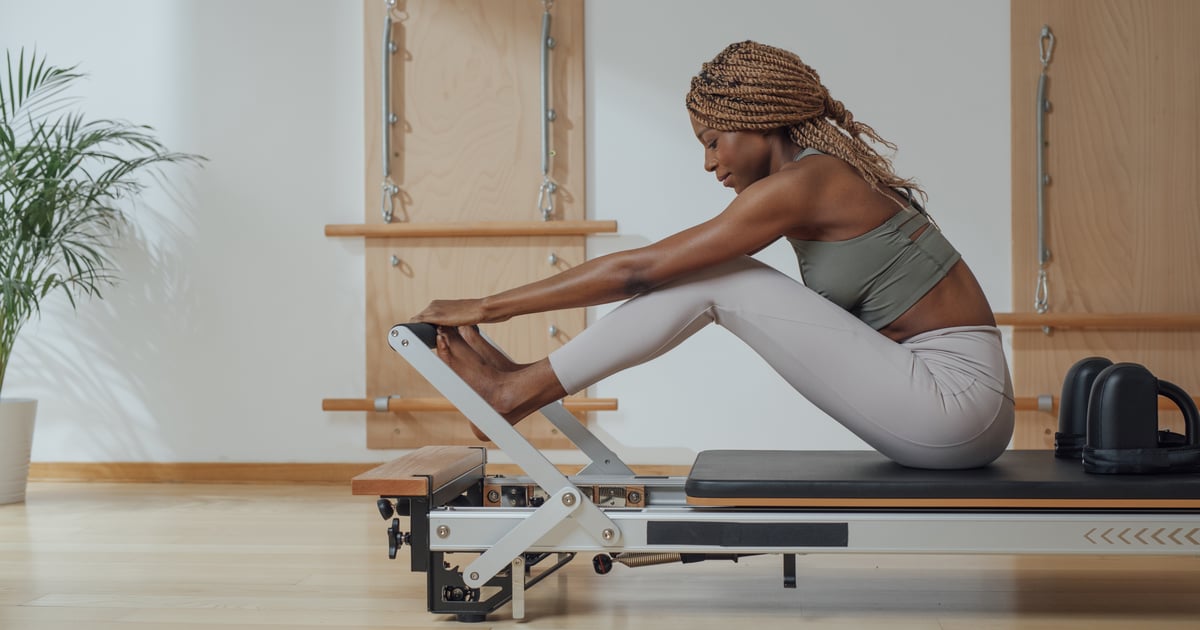Products You May Like

It’s hard not to be swept up by all the trending workout routines you see on TikTok. Just 25 minutes on a Stairmaster twice a week will give you snatched abs, one influencer claims, and 30 minutes on a treadmill at three miles an hour and an incline of 12 percent (also known as the 12-3-30) can work magic for weight loss, according to another.
Now, there’s the “3-2-1 method” being shared across the app — a weekly workout routine that’s said to help you feel and see results thanks to three days of strength training, two days of Pilates, and one day of cardio or conditioning. Following the 3-2-1 method can be helpful for anyone who has a hard time being consistent in the gym, but is it really as great a plan and as effective as TikTokers say? And how do you try it for yourself? Here’s what fitness experts had to say.
What Is the 3-2-1 Method, Exactly?
The 3-2-1 method is a simple formula for organizing your week of workouts. The method prescribes doing three strength workouts, two Pilates workouts, and one cardio or conditioning workout per week. There are a few different versions of the 3-2-1 method circulating the app; some variations recommend two cardio days and one Pilates day while others swap Pilates for any type of low-intensity mobility work.
@justtcocoo Picture this… you start my method and already see/feel changes in your body by January 1st 2023. If you want to feel stronger, leaner, faster, and even more confident in your body this is the program for you!
What Are the Benefits of the 3-2-1 Method?
The most obvious appeal of the 3-2-1 method is that it gives your workout routine some structure. But the reason it’s such an effective approach to exercise is due to the way it alternates between different types of workouts, says Brookelyn Suddell, fitness instructor and Crunch Fitness director of group fitness strategy and development.
“We have a natural tendency to duplicate workouts or favor certain exercises much more than others,” Suddell explains. “That’s why the 3-2-1 method is a great way to make sure you’re evenly spreading out your training focus in a structured way.”
Each one of these workout modalities comes with important benefits: Strength workouts build muscle mass; Pilates improves mind-muscle connection, core strength, and flexibility; and cardio or conditioning increases endurance and cardiovascular health. By regularly switching between these workout types, you essentially prevent your body from plateauing and ensure you’re working on all those elements of fitness at once.
The 3-2-1 method also helps prevent overtraining by incorporating built-in recovery time, since the two Pilates days act as active rest days. That can speed up the recovery process, help you prevent injury, and allow you to keep reaping benefits from your workouts.
“Training before your body has recovered and rebuilt is like stretching an elastic band that has already been stretched,” exercise physiologist Carmen Van Rensburg tells POPSUGAR. “Because it has not been allowed to recover to its original state, further stretching will break it. Altering between strength training and cardio allows some muscle groups to rest while others are worked out.”
Not all fitness trends are beginner friendly, but the 3-2-1 method actually is, because while it does provide a guideline for working out, your individual routine can be tailored to your own abilities.
How to Try the 3-2-1 Method
For those wanting to get into the 3-2-1 method, Van Rensburg recommends starting simple, with a fixed set of exercises and reps that you find doable. Then, when you get the hang of switching between strength, Pilates, and conditioning, you can begin adding variety and upping the intensity. (For beginners, it may also be helpful to swap strength and Pilates, instead doing two days of strength and three days of Pilates each week.)
Suddell’s advice, whether you’re a beginner or a longtime gym goer, is to treat your weekly 3-2-1 like a meal plan, by writing out in your phone or a planner what you’ll be doing on each of the days. “Your days should be different enough from each other and primarily stick within their categories,” she notes. “That does not mean you can’t include some cardio on strength days, but the primary focus, or the majority of the workout, should be clear.”
Try planning your week so workouts of the same type don’t stack up against one another. For example: strength, Pilates, strength, Pilates, strength, cardio, rest.
Strength Workouts
If you’re doing three days of strength, Van Rensburg’s suggestion is to divide it up into two days of upper-body workouts and one day of lower-body workouts. For the two days of upper-body workouts, per her guidance, you’ll want to dedicate the first day to push exercises and the second to pull exercises. “Examples include chest and triceps work (push exercises) on day one, back and biceps work (pull exercises) on day two, and legs work on day three,” Van Rensburg says. TikTokers also recommend doing one day of upper-body work, one day of lower-body work, and one day of total-body strength work.
Pilates
The Pilates sessions can include reformer Pilates, mat Pilates, or — if you’re just not a Pilates girlie — you can swap it for yoga, barre, or mobility workouts. You can attend an IRL class or cue up a Pilates workout from an app like Alo Moves or Obé Fitness, or stream one for free on YouTube from POPSUGAR Fitness.
Cardio and Conditioning
The American Heart Association does recommend at least two and a half hours of cardio a week, but neither Suddell nor Van Rensburg has qualms about reserving the cardio for your one conditioning day, even if your workout isn’t a full two and a half hours long. Conditioning isn’t just limited to cardio-style workouts either — it can be any high-intensity exercise that has minimal rest, such as HIIT or cycling. So if sprinting on a treadmill sounds boring to you, Suddell says you can switch it up by taking group classes or getting outdoors.
In terms of results, no matter what you choose to do on each day, as long as you stick to the 3-2-1 breakdown, you’re bound to see and feel the changes in your strength, flexibility, and cardio fitness. At the very least, it could help you stick to working out and help you plan your workouts with a little less thought. It’s always important to listen to your body, especially when starting a new workout routine, but ultimately it’s safe to say this one is expert-approved.
Image Source: Getty Images / FreshSplash
